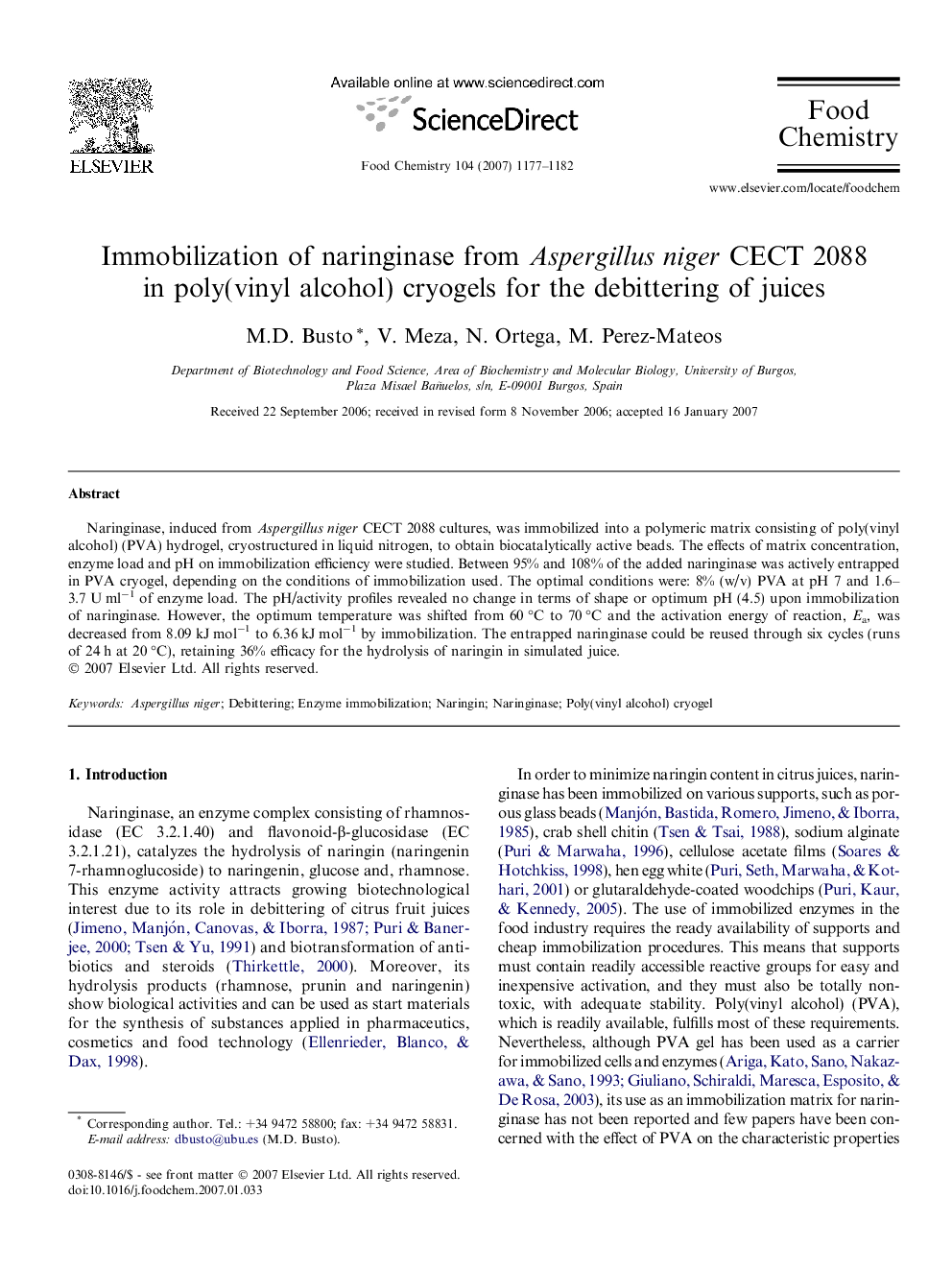| Article ID | Journal | Published Year | Pages | File Type |
|---|---|---|---|---|
| 1189854 | Food Chemistry | 2007 | 6 Pages |
Naringinase, induced from Aspergillus niger CECT 2088 cultures, was immobilized into a polymeric matrix consisting of poly(vinyl alcohol) (PVA) hydrogel, cryostructured in liquid nitrogen, to obtain biocatalytically active beads. The effects of matrix concentration, enzyme load and pH on immobilization efficiency were studied. Between 95% and 108% of the added naringinase was actively entrapped in PVA cryogel, depending on the conditions of immobilization used. The optimal conditions were: 8% (w/v) PVA at pH 7 and 1.6–3.7 U ml−1 of enzyme load. The pH/activity profiles revealed no change in terms of shape or optimum pH (4.5) upon immobilization of naringinase. However, the optimum temperature was shifted from 60 °C to 70 °C and the activation energy of reaction, Ea, was decreased from 8.09 kJ mol−1 to 6.36 kJ mol−1 by immobilization. The entrapped naringinase could be reused through six cycles (runs of 24 h at 20 °C), retaining 36% efficacy for the hydrolysis of naringin in simulated juice.
